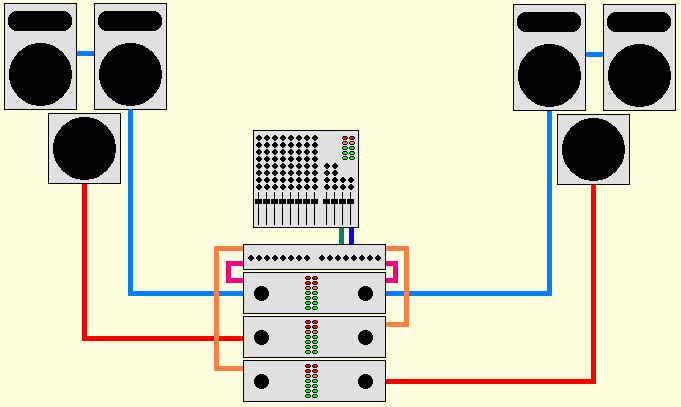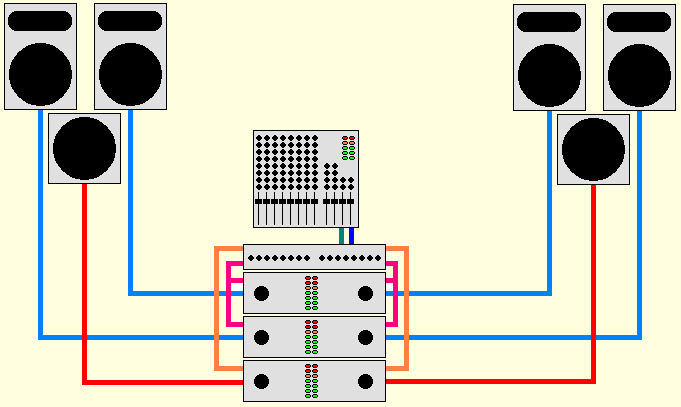Trainwrecked
New member
I'm not a sound engineer & don't know one unfortunately. Bigger gear setups are greek to me. I've only done small bedroom stuff with a small amp & speakers. I've been asked to do a party for people who know less about music/gear than me.
There is a power conditioner. I figure this goes first & TT/CD & mixer plug in here.
I have to set up 4x (2way) mains and 2x subs. With these are a bunch of single 1/4 phone to phone cables that match speakers & the amps.
There are 3 amplifiers (smallest one is 1000 W, other 2 are 2500 W, all three have bridged, mono, stereo switching)
That's the gear supplied.
I don't know what rack gear other than a crossover will be needed or what kind of crossover to get (or even how to do the setup) Is it wired in after the mixer, and then feeds to the amps?
I have no clue what I'm doing for setup, but I can lay down a mix as smooth as Betty Crocker please advise...
please advise...
There is a power conditioner. I figure this goes first & TT/CD & mixer plug in here.
I have to set up 4x (2way) mains and 2x subs. With these are a bunch of single 1/4 phone to phone cables that match speakers & the amps.
There are 3 amplifiers (smallest one is 1000 W, other 2 are 2500 W, all three have bridged, mono, stereo switching)
That's the gear supplied.
I don't know what rack gear other than a crossover will be needed or what kind of crossover to get (or even how to do the setup) Is it wired in after the mixer, and then feeds to the amps?
I have no clue what I'm doing for setup, but I can lay down a mix as smooth as Betty Crocker
 please advise...
please advise...





